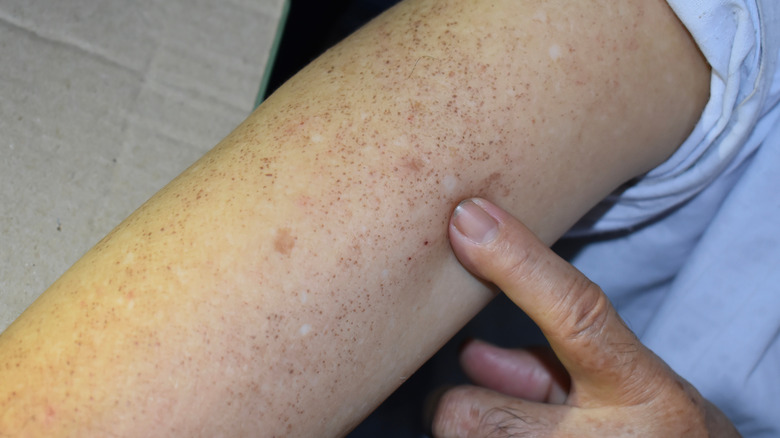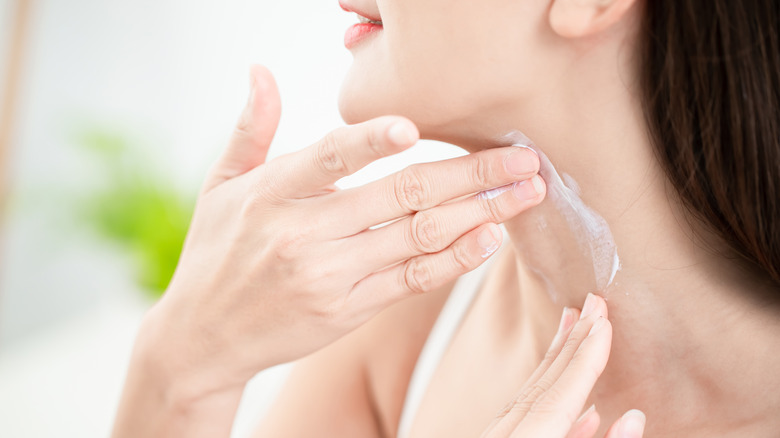The Real Difference Between Liver Spots And Sun Spots
It's no secret — your skin changes as you get older. When monitoring your skin for skin cancer or other skin conditions, you may have come across dark spots that can be alarming. Although these spots aren't cancerous, you should know the differences.
You may have heard of age spots, liver spots, or sun spots. Ironically, liver spots have nothing to do with your liver and are caused by long-term sun exposure (via Everyday Health). Age spots, liver spots, and sun spots are also used interchangeably for the same type of markings, meaning the difference between a sun spot and a liver spot is simply the name you choose to use.
What most people consider to be liver spots are known in the dermatology field by their scientific name, lentigines. These spots are flat, tan-to-dark spots similar to freckles that are pencil eraser-sized to dime-sized. Liver spots or sun spots appear most commonly on the arms, hands, face, and shoulders of adults over 50.
How you can keep liver spots from developing
Although liver spots or sun spots do not require a visit to your dermatologist, skin cancer does. This can be a bit confusing as melanoma can look like harmless sun spots early on, per Everyday Health. Not sure what you're looking at? "If a melanoma arises in a pre-existing mole, it is raised and smooth. If it arises on normal skin, it starts as a flat brown to black growth, then grows out or down," dermatologist John Wolf Jr. told the publication.
If you notice a difference in an existing mark or a new mark has developed, don't hesitate to make an appointment with a dermatologist. If the spot is black, bleeding, has increased in size, or has an irregular border and unusual color combination, it should be evaluated (via Mayo Clinic).
Avoiding both skin cancer and benign sun spots really comes down to practicing sun-safe skincare. You can do this by avoiding going out into the sun between 10 a.m. and 2 p.m. (the sunniest time of the day), applying sunscreen that is SPF 30 or greater every two hours, and wearing clothing that covers your skin with an ultraviolet protection factor of 40 to 50, the Mayo Clinic advised.

